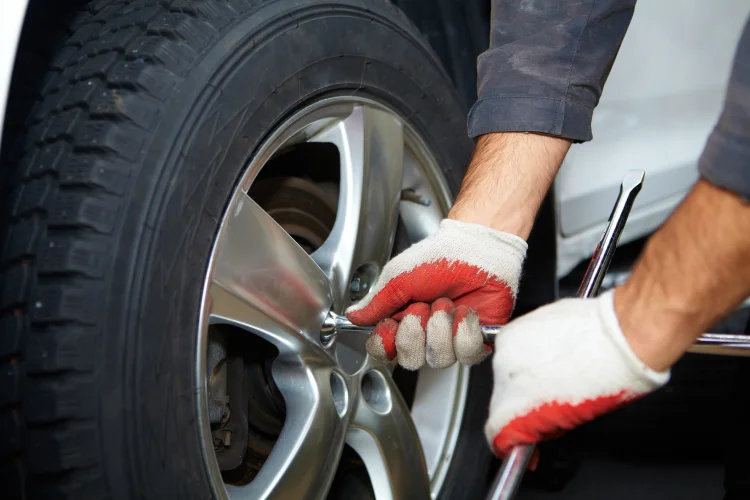Tire Rotation Guide: Patterns, Schedule & Pro Tips
extend tire life
4,735Rotating your tires regularly is one of the simplest—and most important—preventive maintenance tasks you can perform. Yet it’s often overlooked until uneven wear or a vibration in the steering wheel forces the issue. By following a consistent rotation schedule, you’ll extend tire life, and improve handling and fuel economy.

Why Tire Rotation Matters
-
Even Wear Front and rear tires wear differently: front tires handle steering and most braking, while rear tires carry more of the vehicle’s weight under acceleration. Rotating equalizes tread wear, helping all four tires last longer.
-
Better Performance Evenly worn tires maintain consistent grip and balance, reducing vibrations, improving cornering stability, and preserving steering responsiveness.
-
Cost Savings You’ll replace your tires less often—and avoid potential out-of-pocket costs for premature replacement—when you stay on top of rotations. Plus, many extended-warranty plans require proof of routine maintenance to remain valid.
How Often Should You Rotate?
Most manufacturers recommend rotating tires every 5,000 to 8,000 miles. Check your owner’s manual for your vehicle’s specific interval, but if in doubt, aim for every 6,000 miles. Setting a recurring reminder on your calendar ensures you never miss a rotation—and keeps any warranty or service plan in good standing.
Choosing a Rotation Pattern
There are several common rotation patterns. Select the one that best matches your tire type and drivetrain:
-
Forward Cross (FWD vehicles)
-
Front tires → rear, crossed
-
Rear tires → front, straight
-
-
X-Pattern (all-wheel vehicles)
-
Front tires → opposite rear
-
Rear tires → opposite front
-
-
Rearward Cross (RWD and 4WD vehicles)
-
Rear tires → front, straight
-
Front tires → rear, crossed
-
-
Side-to-Side (directional tires or staggered fitments)
- Front ↔ rear on the same side
Your tire or vehicle manufacturer’s recommendations override these general guidelines—always check their guide first.
Step-by-Step Rotation Guide
-
Gather Your Tools
-
Jack and jack stands
-
Lug wrench or impact gun
-
-
Prepare the Vehicle
-
Park on level ground and engage the parking brake.
-
Place wheel chocks behind the rear wheels.
-
-
Loosen Lug Nuts
- With the car still on the ground, break loose each lug nut about a half-turn.
-
Lift and Remove
- Jack up one corner, secure with a jack stand, then finish removing the lug nuts and tire.
-
Swap Tires
- Follow your chosen rotation pattern. Mount the tires finger-tight.
-
Lower and Torque
- Lower the wheel to touch the ground with weight on it, then torque each lug nut in a star pattern to the manufacturer’s spec.
-
Repeat
- Rotate all four tires.
-
Final Check
- After driving 50–100 miles, re-check lug-nut torque.
Pro Tips for Lasting Tires
-
Check Tire Pressure Monthly Under- or over-inflation accelerates wear and can void any tire warranty coverage.
-
Inspect for Damage Look for cuts, bulges, or embedded objects each time you rotate. Early detection saves you from roadside headaches.
-
Keep Records Note dates and odometer readings for every rotation and service.
-
Align and Balance Whenever you rotate, it’s a good opportunity to check wheel alignment—especially if you notice vibration, pulling, or uneven wear.
Conclusion
A regular tire-rotation routine is the cornerstone of safe, efficient, and cost-effective driving. By rotating every 5,000–8,000 miles, following the proper pattern, and keeping detailed service records, you’ll maximize tire life, and optimize fuel economy.
While you are at it show your rims some love too!
TL;DR: Maximize tire life and boost safety by rotating your tires every 5,000–8,000 miles. Learn the best rotation patterns for FWD, RWD, AWD, and directional tires, plus step-by-step guidance, pro tips on pressure checks and alignment, and record-keeping strategies to preserve warranty coverage and improve fuel economy.
— Demetrius McGee
